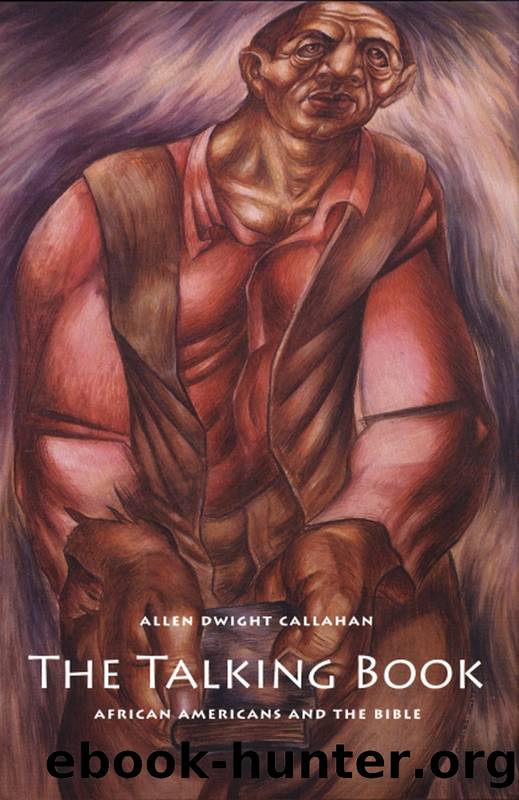The Talking Book by Allen Dwight Callahan

Author:Allen Dwight Callahan
Language: eng
Format: epub
Publisher: Yale University Press
Published: 2006-06-15T00:00:00+00:00
TAKING A TEXT
Europeans had been using the term Ethiopian to refer to African peoples since the ninth century BCE, when Homer applied it to the glorious, dark-skinned people at the southern edge of the world. European geographers came to refer to the peoples south of Egypt collectively as Ethiopians, and medieval Europeans looked to Africa for deliverance from the threat of Islam in the legend of Prester John, powerful king of an unconquerable Christian kingdom in Ethiopia that flanked the Islamic regimes of North Africa.2
In the English language, the word Ethiopia and its cognates epitomized everything dark or black. Shakespeareâs Romeo says of Juliet, âIt seems she hangs upon the cheek of night / As a rich jewel in an Ethiopâs ear.â In the New World, however, the term took on new meaning. There, images of Africa were freighted with the connotation of slavery. Three centuries after Shakespeare, Walt Whitman, writing of a âdusky woman, so ancient, hardly human,â is referring to an aged African-American slave in his poem âEthiopia Saluting the Colors.â âEthiopsâ continued to be synonymous with the adjectives âblackâ and âNegroâ as a common way of referring to African slaves.3 To provide theological direction for the conversion of slaves, in 1627 Jesuit Alonso de Sandoval published De instauranda Aethiopum Salute: El mundo de la esclavitud negra en America (On securing the salvation of the Ethiopian: the world of black slavery in America). Sandoval argued that because the slaves served their temporal needs, Spanish masters ought to see to the eternal salvation of their slaves. Proper religious instruction would insure the slaves a place in the world to come and show slaves that their proper vocation was obedience to their masters.
At the beginning of the eighteenth century, Puritan divine Cotton Mather made similar arguments for the religious instruction of African slaves in North America. In 1706 Mather charged New England slaveholders to instruct their slaves in the ways of Christianity, and to that end wrote the catechetical pamphlet The Negro Christianized: An Essay to Excite and Assist the Good Work, the Instruction of Negro Servants in Christianity. Appearing on the pamphlet cover were two quotations from scripture: one, Joshua 24:15, âAs for me and my house, we will serve the Lord,â the other, Psalm 68:31.4
Mather published his pamphlet after more than a decade of pastoral experience with âEthiopians.â Thirteen years earlier he published Rules for the Society of Negroes as a devotional constitution of sorts for a slave prayer meeting. In Matherâs manuscript diary for October 1693, he describes how he came to write the Rules.
Besides the other praying and pious meetings, which I have been continually serving, in our Neighborhood, a little after this Period, a company of poor Negroes, of their own Accord, addressed mee, for my Countenance to a Design which they had, of erecting such a Meeting for the Welfare of their miserable Nation, that were Servants among us. I allowed their design and went one Evening and prayed and preached [on Ps. 68,
Download
This site does not store any files on its server. We only index and link to content provided by other sites. Please contact the content providers to delete copyright contents if any and email us, we'll remove relevant links or contents immediately.
| Buddhism | Christianity |
| Ethnic & Tribal | General |
| Hinduism | Islam |
| Judaism | New Age, Mythology & Occult |
| Religion, Politics & State |
Cecilia; Or, Memoirs of an Heiress — Volume 1 by Fanny Burney(31348)
Cecilia; Or, Memoirs of an Heiress — Volume 3 by Fanny Burney(30946)
Cecilia; Or, Memoirs of an Heiress — Volume 2 by Fanny Burney(30905)
The Secret History by Donna Tartt(16656)
Sapiens: A Brief History of Humankind by Yuval Noah Harari(13071)
Leonardo da Vinci by Walter Isaacson(11914)
The Radium Girls by Kate Moore(10914)
Sapiens by Yuval Noah Harari(4549)
The Wind in My Hair by Masih Alinejad(4427)
How Democracies Die by Steven Levitsky & Daniel Ziblatt(4408)
Homo Deus: A Brief History of Tomorrow by Yuval Noah Harari(4287)
Endurance: Shackleton's Incredible Voyage by Alfred Lansing(3853)
The Silk Roads by Peter Frankopan(3775)
Man's Search for Meaning by Viktor Frankl(3646)
Millionaire: The Philanderer, Gambler, and Duelist Who Invented Modern Finance by Janet Gleeson(3575)
The Rape of Nanking by Iris Chang(3525)
Hitler in Los Angeles by Steven J. Ross(3446)
The Motorcycle Diaries by Ernesto Che Guevara(3343)
Joan of Arc by Mary Gordon(3267)
